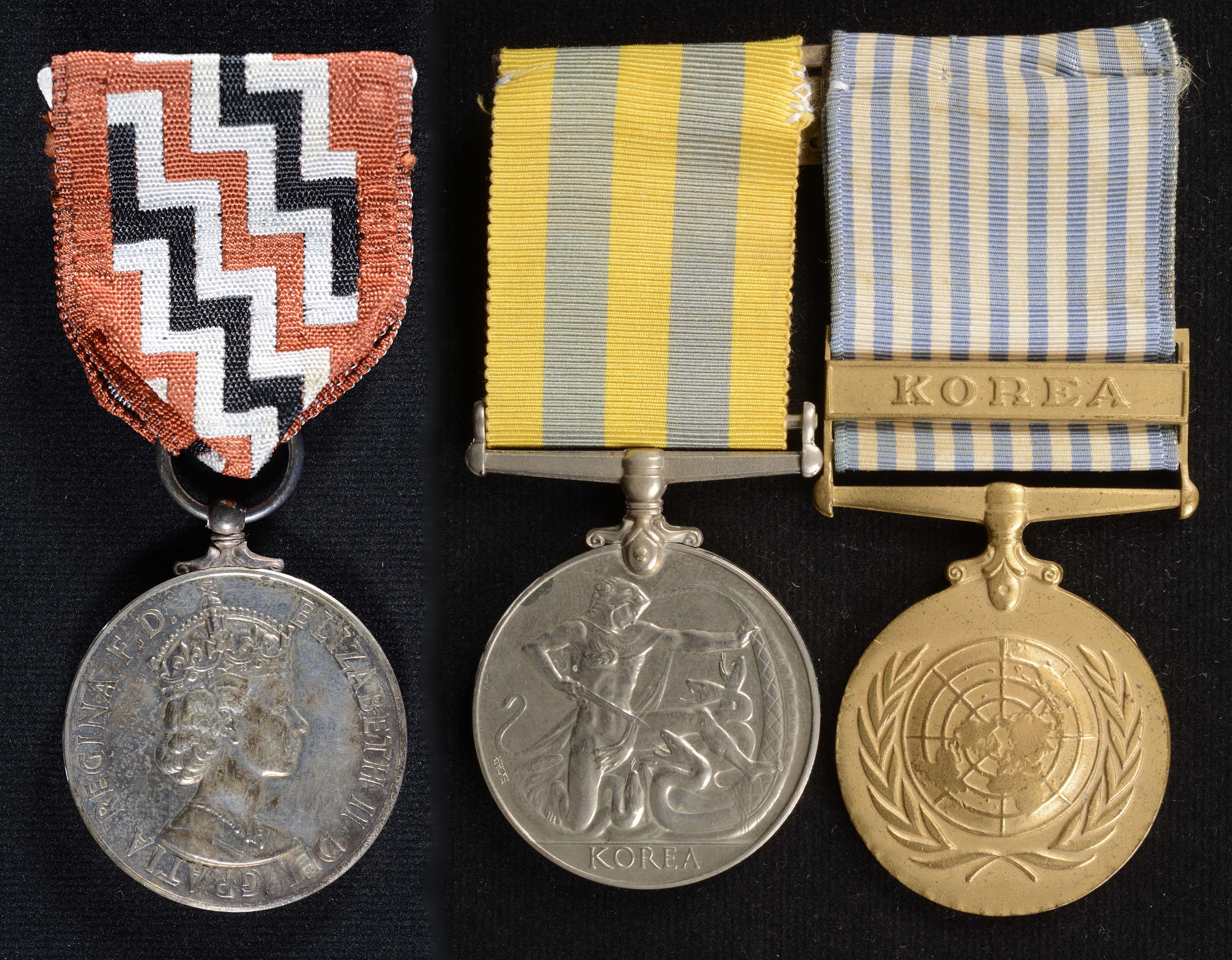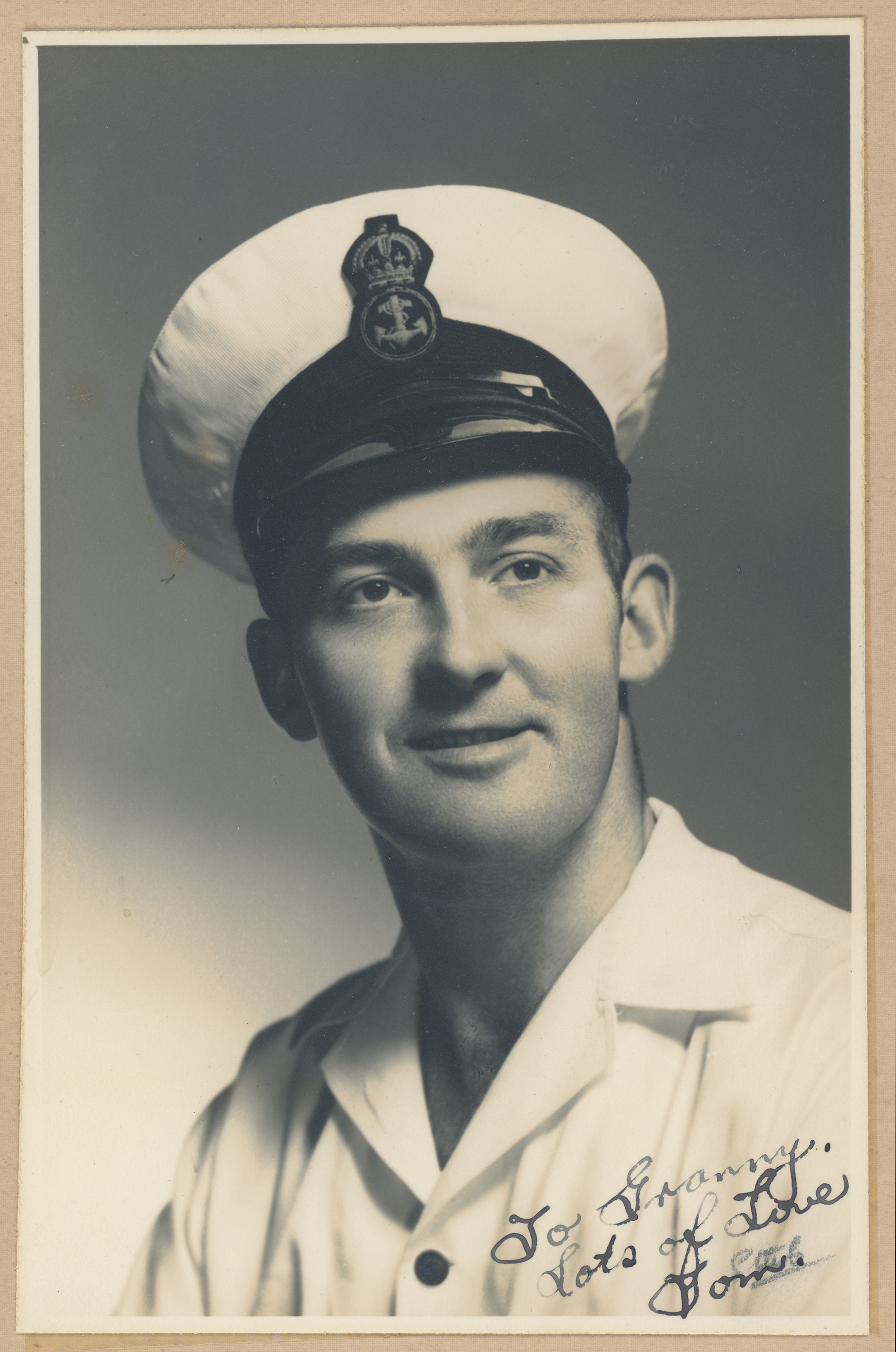

Display No. 6C
ABBOTT, Thomas Willie
Thomas Abbott joined the Royal New Zealand Navy (RNZN) in 1951. After basic training in HMNZS Tamaki, he was posted to HMNZS Philomel where he trained as a Cook. During the Korean War he saw active service in HMNZS Hawea. During this time he also served as an ammunition handler. On returning to New Zealand, he was posted to HMNZS Irirangi, the Navy Communications Station near Waiouru. In December 1953, Abbott was part of the first rescue group on the scene after the Tangiwai disaster. For Abbott’s efforts at Tangiwai he received a commendation from the Chief of Naval Staff. After leaving the Navy in 1954, he became heavily involved in the Royal Life Saving Society. In 1979 he was awarded the Queen’s Service Medal (QSM) for his services to life saving. Thomas is the son of Maurice Abbott, whose medals are also on display here.
Awarded medal(s)
Medal Description [Left to Right]:
Queen’s Service Medal (NZ)
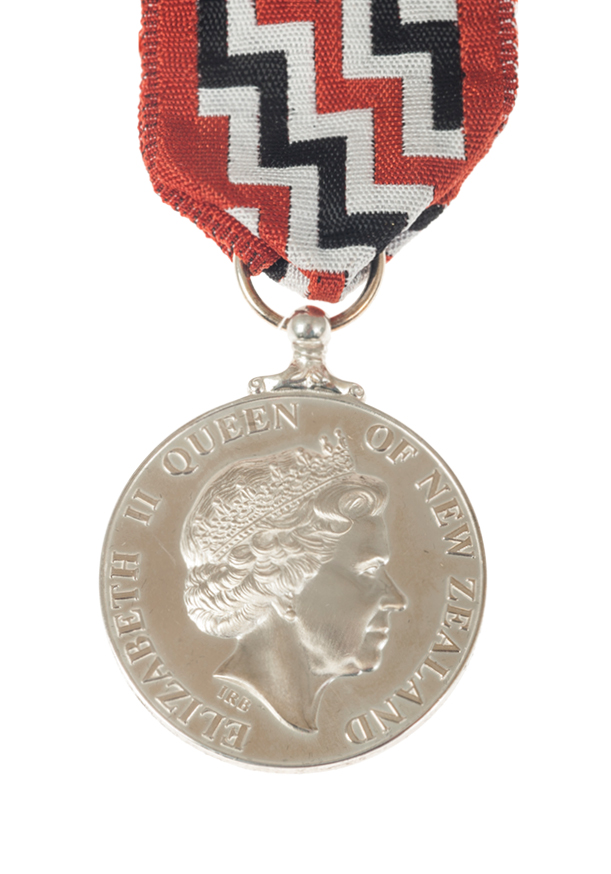
The Queen’s Service Medal (QSM) was instituted by New Zealand in 1975, at the same time as the Queen’s Service Order (QSO). The purpose of both the QSO and the QSM is to recognise voluntary service to the community and also elected or appointed public office. Military personnel are not eligible to be awarded the QSM for their military service, however, community service performed in a civilian capacity can be recognised by the award of the QSM. The ribbon has central alternating stripes of red ochre (kōkōwai), white and black in a descending step pattern from left to right with narrow red ochre edges. The design is based on the Māori Putama (stepped) pattern used in Tukutuku wall panels. It is usually interpreted as the ‘stairway to heaven’, but in this case alludes to ‘steps of service’.
The Korea Medal
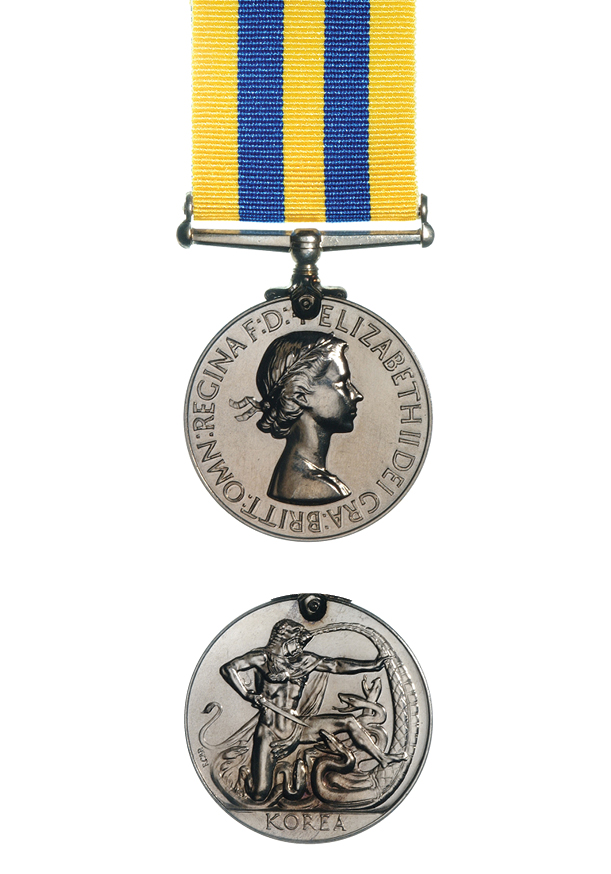
This medal was instituted in 1951, to recognise the service of Commonwealth troops in the Korean War between 2 July 1950 and 27 July 1953. It is sometimes referred to as the Queen’s Korea Medal to differentiate it from the United Nations Korea Medal. For naval forces, qualification is 28 days or more afloat in the operational area or at least one day of shore duty. The medal’s reverse features Hercules wrestling the Hydra – a symbolic representation of communism. The ribbon has alternating yellow and blue stripes. Blue represents the United Nations.
United Nations Medal Korea
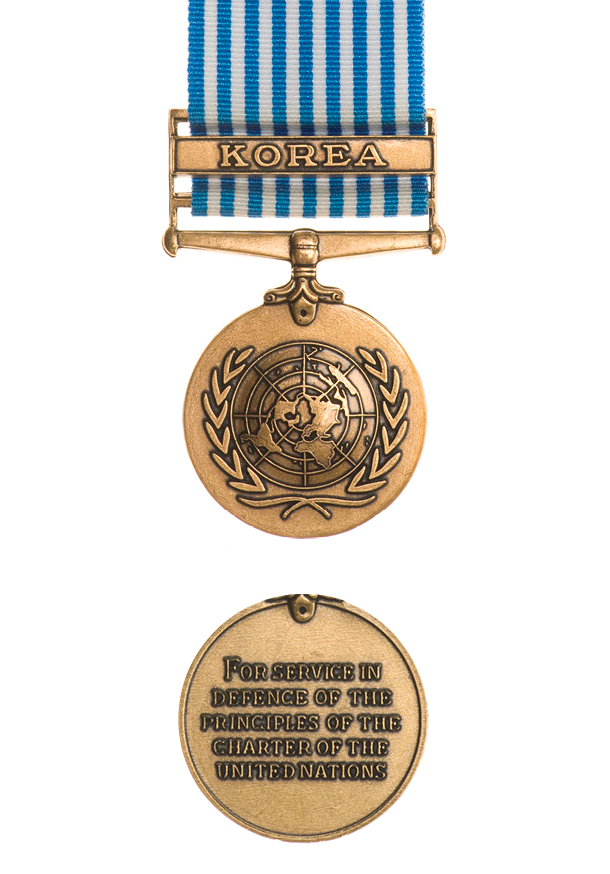
The United Nations Medal (Korea) was awarded for service during the Korean War and the year following the armistice (July 1950 to July 1954). It was the first international award created by the United Nations and features the UN emblem of a projection map of the world between two olive branches. The medal recognises the service of all military troops participating as part of the UN forces in Korea and was manufactured in the language of each country. It was also awarded to a limited range of civilians whose organisations were certified by the United Nations Commander-in-Chief as having directly supported military operations in Korea between 1950 and 1954.

